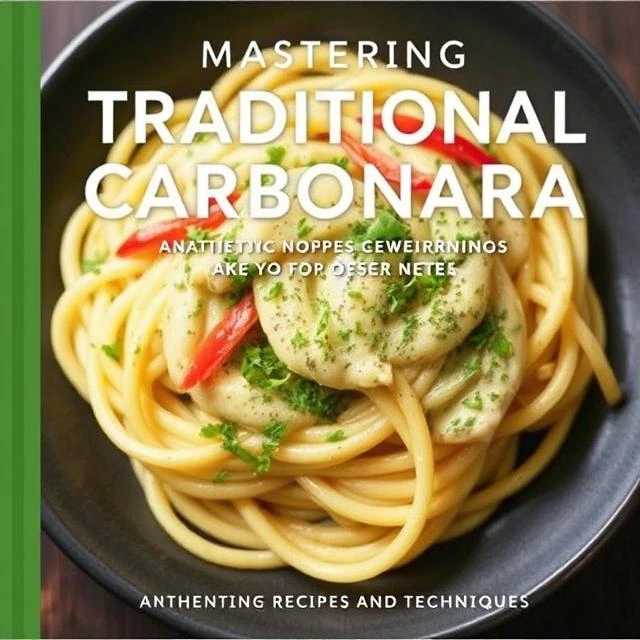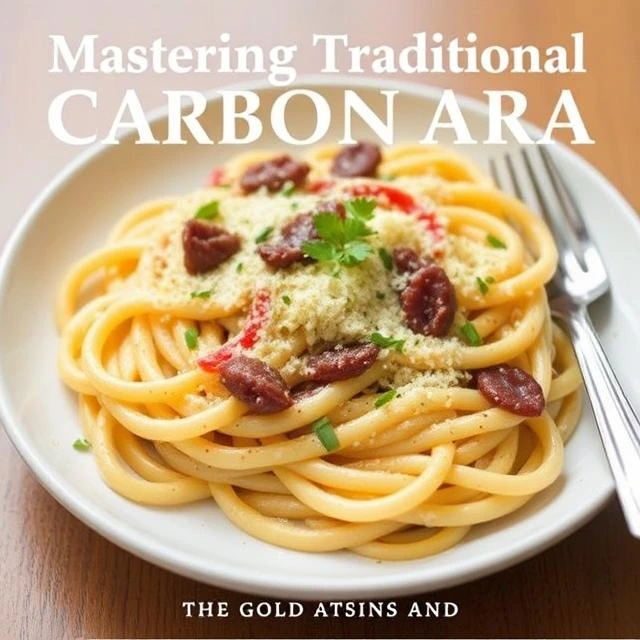INTRODUCTION
Spaghetti alla Carbonara stands as a testament to the elegance of simplicity in Italian cuisine. Originating from Rome, this classic dish combines a handful of quality ingredients to create a harmonious blend of flavors and textures. In this comprehensive guide, we’ll delve into the history of Carbonara, discuss its traditional ingredients, provide a step-by-step authentic recipe, and share expert techniques to master this iconic pasta.
The Origins of Spaghetti alla Carbonara
The exact origins of Carbonara are shrouded in mystery, with several theories attempting to trace its roots. One prevalent hypothesis suggests that the dish emerged in 1944 during the liberation of Rome. American soldiers, equipped with military rations of powdered eggs and bacon, collaborated with local cooks to create a meal reminiscent of home, leading to the birth of Carbonara. Another theory posits that the name “Carbonara” derives from “carbonari,” Italian for charcoal burners, implying that it was a popular dish among coal workers. Despite its debated history, Carbonara has firmly established itself as a cornerstone of Roman culinary tradition.

Essential Ingredients for Authentic Carbonara
To achieve the quintessential Carbonara, it’s imperative to use traditional ingredients that honor its Roman heritage:
- Pasta: While spaghetti is the most commonly used, other shapes like tonnarelli, mezze maniche, or rigatoni are also acceptable.
- Guanciale: This cured pork cheek imparts a distinct depth of flavor. Its rich, fatty composition renders a unique taste and texture that is central to authentic Carbonara.
- Pecorino Romano: A sharp, salty sheep’s milk cheese that adds a robust flavor profile to the dish.
- Eggs: Fresh, large eggs are essential, with a focus on using yolks to achieve a creamy consistency.
- Black Pepper: Freshly ground black pepper introduces a spicy kick, balancing the richness of the other components.
It’s crucial to note that traditional Carbonara does not include cream, garlic, onions, or parsley. The creaminess of the sauce is derived solely from the emulsification of eggs, cheese, and pasta waterhttp://Exploring the Origins of Carbonara: Delve deeper into the rich history and debated origins of this classic Roman dish..

Authentic Spaghetti alla Carbonara Recipe
Ingredients (Serves 4):
- 400 grams (14 ounces) spaghetti
- 150 grams (5 ounces) guanciale, cut into small strips
- 100 grams (3.5 ounces) Pecorino Romano, finely grated
- 4 large egg yolks
- 1 large whole egg
- Freshly ground black pepper
- Salt for pasta water
Instructions:
- Prepare the Pasta: Bring a large pot of water to a rolling boil. Add a generous amount of salt; the water should be as salty as the sea. Introduce the spaghetti and cook until al dente, following the package instructions.
- Cook the Guanciale: While the pasta cooks, place the guanciale in a cold skillet over medium heat. Cooking from a cold start allows the fat to render slowly, resulting in crispy, flavorful pieces. Sauté until the guanciale is golden brown and crisp, approximately 5-7 minutes. Remove the skillet from heat and set aside.
- Prepare the Egg Mixture: In a mixing bowl, whisk together the egg yolks, whole egg, and grated Pecorino Romano until well combined. Add a generous amount of freshly ground black pepper to the mixture.
- Combine Pasta and Guanciale: Once the pasta reaches al dente perfection, reserve about 1 cup of the starchy pasta water. Drain the pasta and add it directly to the skillet containing the guanciale. Toss to combine, ensuring the pasta is well-coated with the rendered fat.
- Incorporate the Egg Mixture: Allow the pasta and guanciale to cool slightly for about a minute to prevent the eggs from scrambling. Pour the egg and cheese mixture over the pasta, tossing vigorously to create a creamy sauce. If the mixture appears dry, gradually add the reserved pasta water, a little at a time, until the desired consistency is achieved.
- Serve Immediately: Plate the Carbonara and finish with an extra sprinkle of Pecorino Romano and a dash of freshly ground black pepper.
Expert Techniques for Perfecting Carbonara
Achieving the perfect Carbonara requires attention to detail and adherence to traditional methods. Here are some expert tips to elevate your dish:
- Quality of Ingredients: Authenticity begins with sourcing high-quality ingredients. Opt for genuine guanciale and Pecorino Romano to capture the true essence of Roman Carbonara.
- Egg Preparation: For a luxuriously creamy sauce, use a combination of egg yolks and a whole egg. This ratio ensures richness without the need for added cream.
- Temperature Control: To prevent the eggs from curdling, it’s essential to remove the skillet from direct heat before adding the egg mixture. The residual heat from the pasta will gently cook the eggs, resulting in a smooth, velvety sauce.
- Pasta Water Utilization: The starchy pasta water is a valuable asset in achieving the desired sauce consistency. Add it sparingly, as needed, to emulsify the sauce and help it adhere to the pasta.
- Pepper Freshness: Freshly ground black pepper offers a more vibrant and robust flavor compared to pre-ground varieties. Its piquancy is a hallmark of traditional Carbonara.

Common Missteps to Avoid
While Carbonara is celebrated for its simplicity, certain pitfalls can compromise its authenticity:
- Substituting Ingredients: Replacing guanciale with bacon or pancetta, or Pecorino Romano with Parmesan, alters the fundamental flavor profile of the dish. For an authentic experience, it’s advisable to use the traditional ingredients.
- Adding Cream: The creaminess of Carbonara should stem from the emulsification of eggs, cheese, and pasta water. Introducing cream results in a heavier sauce that deviates from the classic preparationhttp://Authentic Spaghetti alla Carbonara Recipe: This detailed recipe provides step-by-step instructions to prepare a traditional Carbonara, emphasizing the use of authentic ingredients.
CONCLUSION
In mastering the art of traditional Spaghetti alla Carbonara, one embraces the essence of Roman culinary tradition. This dish exemplifies how simplicity, when executed with precision and quality ingredients, can yield extraordinary flavors. By adhering to authentic components—spaghetti, guanciale, Pecorino Romano, eggs, and black pepper—and employing meticulous techniques, one can recreate a classic Carbonara that pays homage to its rich heritage. The key lies in balancing these elements to achieve a harmonious blend of textures and tastes, resulting in a creamy, flavorful pasta that stands as a testament to the timeless appeal of Italian cuisine.